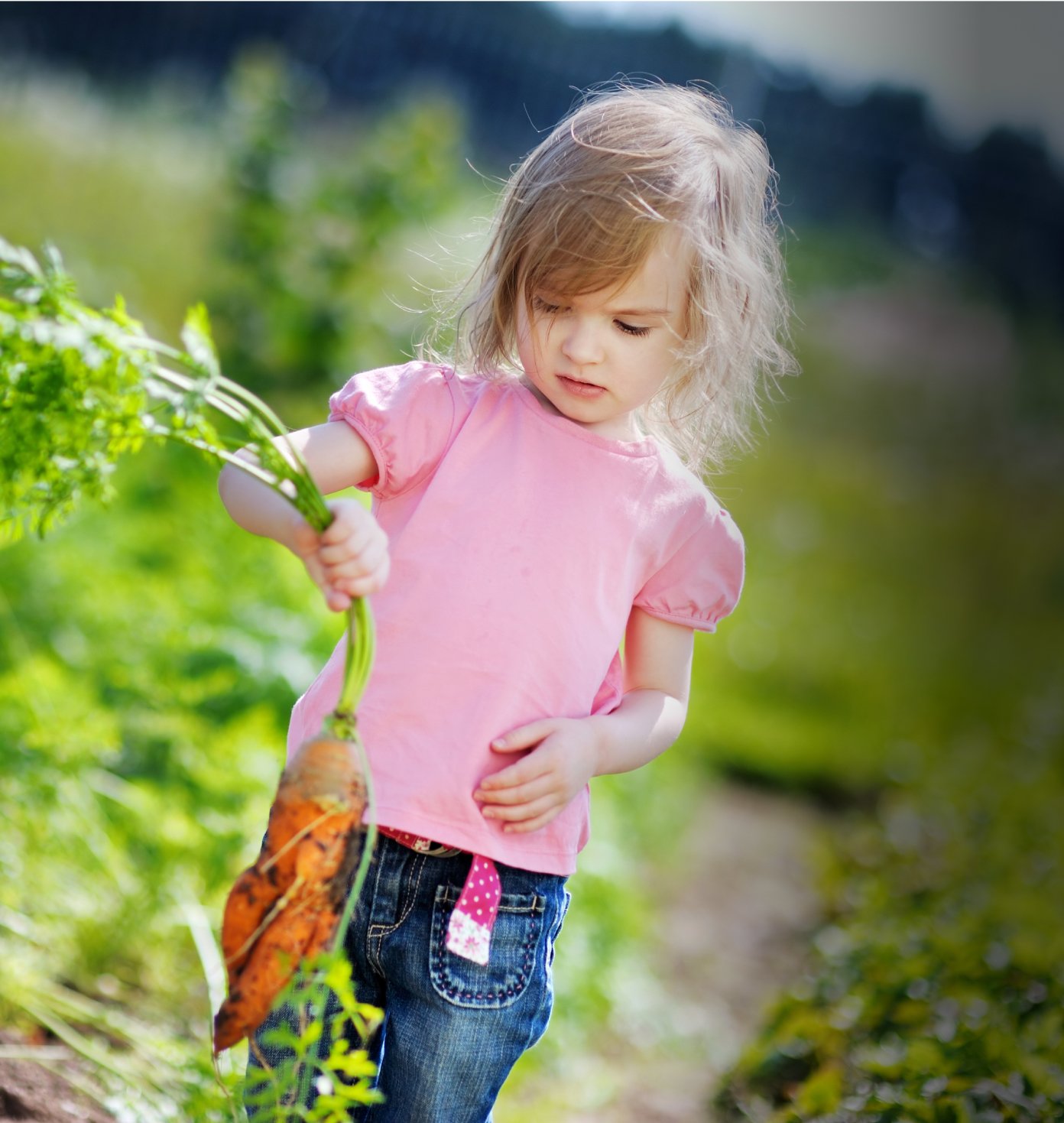Three neonic pesticides banned in Europe are common on U.S. produces
By Olga V. Naidenko, Ph.D., VP, Science Investigations and Alexis M. Temkin, Ph.D., Toxicologist
UPDATED WEDNESDAY, MARCH 15, 2023
More than 15 percent of U.S. non-organic fruits and vegetables from 2002 to 2020 had residues of at least one of three neonicotinoid insecticides banned for outdoor use by the European Union in 2018 because of their harm to pollinators: imidacloprid, clothianidin and thiamethoxam.
For some produce – spinach, potatoes, lettuce and eggplant – more than half the samples tested had residues of at least one of these neonics. And about one in four samples of cherries, strawberries and watermelon tested positive for at least one of the three.
Some human health studies suggest exposure to neonics may be harmful to children and the developing fetus.
Neonics are used as a seed-coating treatment for corn and soybeans and sprayed on many fruits and vegetables during the growing season. Over the past two decades, the use of neonics has dramatically expanded as they became a mainstay of non-organic, or conventional, agriculture, thought to be safer alternatives to toxic organophosphates like chlorpyrifos.
Neonics have been linked to honeybee colony collapse disorder. In 2018, the EU issued a ban on the outdoor use of imidacloprid, clothianidin and thiamethoxam because of their potential harm to bees and other pollinators.
A fourth neonic, acetamiprid, is also widely detected on conventional U.S. produce, especially in the fruits kids like to eat. It was detected on about one in three strawberry and apple samples and nearly a quarter of cherry samples tested by the Department of Agriculture.
Although acetamiprid is still approved for use in the EU, scientific evidence based on studies in laboratory animals is mounting that it may also be harmful to bees and possibly humans. In the U.S., acetamiprid is the most frequently detected neonic in children.
Table 1: U.S. produce with residues of one or more of three neonic pesticides banned in Europee
| Fruit or vegetable | Percent of samples with samples of one or more of clothianidin and thiamethoxam |
|---|---|
| Spinach | 61 |
| Potatoes | 58 |
| Lettuces | 54 |
| Eggplant | 51 |
| Cauliflower | 49 |
| Winter squash | 46 |
| Tomatoes | 29 |
| Cherry tomatoes | 32 |
| Cherries (fresh) | 31 |
EWG analyzed the prevalence of imidacloprid, clothianidin and thiamethoxam – three neonicotinoid insecticides banned in Europe – on U.S. non-organic produce. The data are from USDA testing conducted between 2002 and 2020. Sweet corn, mushrooms, kiwis, avocados, bananas, frozen sweet peas and sweet potatoes did not have residues of these neonics.
Growing evidence neonics may harm children’s health
Some human health studies suggest exposure to neonics may be harmful to children and the developing fetus.
Biomonitoring studies show that exposure in children and pregnant women around the world is widespread. In one study, neonics were detected in the urine of half of kids ages 3 to 5, and their diet may be a primary route of exposure.
In 2017, researchers from George Washington University and the National Institute of Environmental Health Sciences reported that in some human epidemiological studies, exposure to neonics has been linked to increased risk of harm to the developing fetus, as well as higher risk of autism spectrum disorders and memory loss.
In 2020, the National Toxicology Program published a review of toxicity associated with neonics, reporting that neurotoxicity was the most studied outcome, with several more studies on developmental effects.
Since 2020, other animal studies show neonics may also harm the male and female reproductive systems, as well as affecting memory and behavior.
Neonics and pollinators
In the largest field study of the effects of neonics on honeybees and wild bees, European scientists reported that they harm bee colonies – especially when bees have nothing to feed on other than crops treated with synthetic pesticides.
In worldwide tests of honey samples, neonics were found in three-fourths of samples, underscoring the threat these insecticides pose to bee colonies.
To protect bees and other pollinators, in 2013 the EU put a pause on neonic use on several crops, followed by a decision to adopt a complete ban, which took effect at the end of 2018, though several EU member countries have been granted “emergency” exemptions. Recently the U.K. allowed the use of neonics on sugarbeets.
Multiple neonics often found on one sample
EWG’s analysis of the USDA data found that multiple neonics are often used on the same crop.
Thirty percent of spinach, 20 percent of eggplant and 12 percent of bell and hot peppers tested by the agency contained at least two neonics. Some samples contained three or four.
The fruits and vegetables with the highest average concentrations of imidacloprid or acetamiprid were grapes, cherries, kale, collards and mustard greens, spinach and strawberries.
Two other neonics, thiacloprid and dinotefuran, which are also not approved for use in the EU, are less common on fruits and vegetables in the U.S.
Thiacloprid was banned in the EU due to links to reproductive harm and its ability to contaminate drinking water sources. Its use in the U.S. has been declining since 2016. Thiacloprid was found on about five percent of apples, bell and hot peppers, and pears.
Use of dinotefuran has also been declining, but it can be detected on 12, 15 and 16 percent of eggplant, tomatoes and cantaloupe samples, respectively.
Neonic regulation in the U.S.
Although the Environmental Protection Agency continues to allow the outdoor use of these insecticides, some states are taking action to limit their use, in an effort to protect pollinators.
Most recently, California’s Department of Pesticide Regulation moved to limit outdoor uses of imidacloprid, clothianidin, dinotefuran and thiamethoxam on crops that are attractive to bees. Several other states have laws in place regulating the use of neonics including Maine and New Jersey.
But the U.S. has lagged far behind in taking action on neonics, despite the fact that bee colony collapse caused severe economic losses for American beekeepers. Bees and other pollinators are also essential for U.S. farmers that grow squash, melon, cantaloupe, apples, almonds and many other crops that need pollination to bear fruit.
Other studies show the extensive use of neonics may not be necessary. A study published in 2021 in the prestigious journal PNAS found that integrative pest management techniques – such as combining corn and watermelon crops – reduced the use of imidacloprid by 95 percent while maintaining yields of corn and increasing watermelon yields because of the increased attraction of wild bees.
EWG and more than 120,000 of our supporters have written to the EPA urging it to ban all unnecessary uses of neonic insecticides in the U.S.
To protect bees – and the health of children and all Americans – farmers must shift from intensive use of chemical pesticides to safer, non-chemical pest management methods. Families who want to protect themselves from pesticide exposure should choose organic produce or produce with fewer pesticide residues, whenever possible.
About EWG’s Shopper’s Guide to Pesticides in Produce
EWG's Shopper’s Guide to Pesticides in Produce is a suite of materials investigating the presence of pesticides in foods and the ways they could harm people, especially children – and to help consumers make the best, most informed choices for their families.
We’ve published the guide nearly every year since 2004.
EWG's Shopper’s Guide is designed to support people who would like to minimize their exposure to pesticides. It includes two well-known lists: the Dirty Dozen, or the 12 fresh non-organic, or conventional, fruits and vegetables with the highest pesticide residues, as well as the Clean Fifteen, the conventionally grown fruits and vegetables with very low or no traces of pesticides.
Some pesticides have more data linking them to health concerns than others. These pesticides are particularly concerning for children, who are especially susceptible to many of the health harms associated with pesticide exposure.
The presence of so many different pesticides in foods is also problematic. There’s little data available about how multiple pesticides interact with each other in the body or how such mixtures could compound each chemical’s individual potential health harms. But the data we do have suggests that when chemicals are present in a mixture, they may be toxic to humans at lower levels than when alone.
When regulating pesticides, government bodies also consider them only one at a time. They don’t look at the potential total body burden for consumers.











